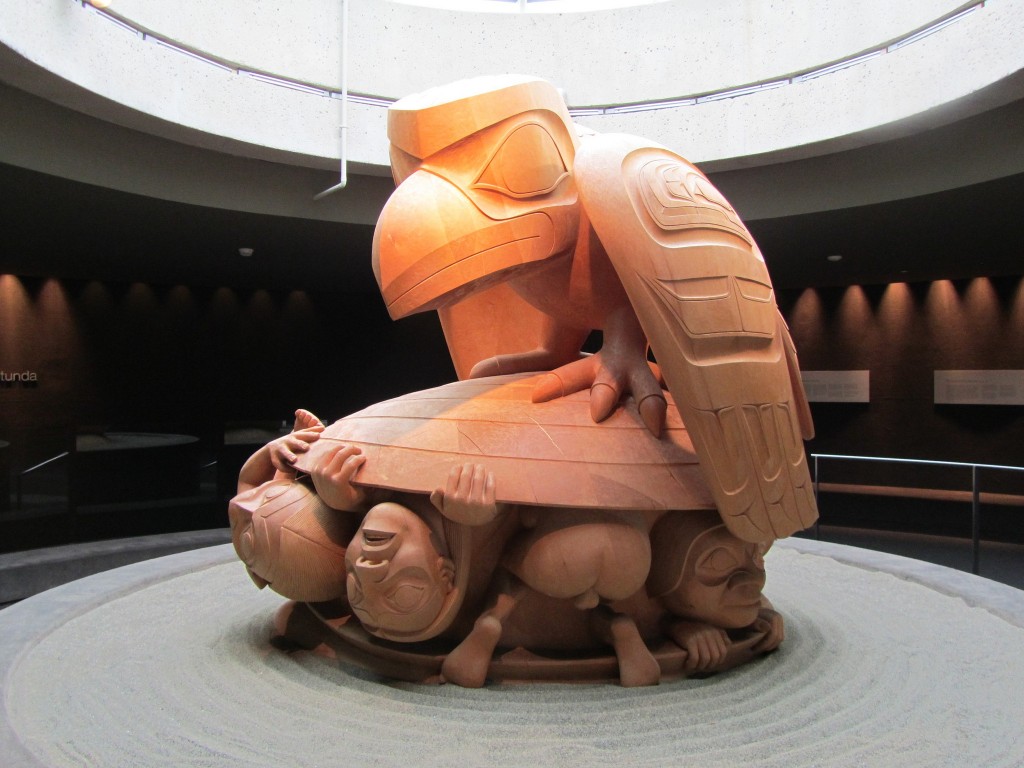My assigned pages were from “Eli Stands Alone stood at the window….” to “Charlie looked out at the clouds,” pages 94-102 of the class edition.
The passage features Clifford Sifton’s attempts to build a dam and Eli Stands Alone’s attempts to stop him.
According to the Jane Flick article from our reading list, Clifford Sifton (1861-1929) was a real person who promoted settlement in the west and encouraged displacement of the Native population. She also notes that he held a government position and that he suffered from deafness.
Flick says that Eli Stands Alone is an allusion to Elijah Harper, and may also be inspired by the name Pete Standing Alone, the subject of a National Film Board documentary. Elijah Harper blocked the Meech Lake Constitutional Accord in 1990 in the Manitoba legislature when he voted against a debate that did not include adequate consultation with First Nations.
The Canadian Encyclopedia page for Elijah Harper provides some additional background on his political career, noting that he was the first Aboriginal person to hold a seat in the Manitoba legislature. AMMSA also has an overview of Elijah’s actions against the Meech Lake Constitutional Accord that illustrates how influential he was and how much opposition he faced.
Another blog that I found points out a possible connection between Eli Stands Alone and Elijah from the bible, as both characters stand firm in their conviction in the midst of significant opposition. I found this suggestion quite interesting, since it seems to fit with what I’ve read so far about the way King combines Indigenous and Christian mythology.
I read the dam itself in Green Grass, Running Water as a powerful symbol of “civilization” taming nature, so it’s easy to see a lot more in these scenes than just the specific situation that the characters are dealing with.
Given the above context, Eli Stands Alone is firmly positioned as a heroic character who fights for Indigenous rights and is able to literally stand alone against the opposition, representing not only himself but the other people who have taken on similar roles through history. Similarly, Clifford Stanton is a character with a history of ignorance and adversity, with his deafness taking on a double meaning.
At the same time, I think the similarities between these characters are also worth noting. In the book, each character is quite friendly to each other, at least in the present, and they both share different perspectives on the politics behind the dam; in reality, both of the people the characters were based on held positions in government.
By basing his characters off of these historical figures, King not only adds to our understanding of them but also imagines a meeting between them that couldn’t actually happen—although it’s easy to wish that there had been someone like Elijah Harper to stand up to Clifford Sifton in the early 1900s.
Finally, we can perhaps find some additional meaning in the law and public relations firms that defend the dam, which also add to our sense of the conflict as a political one. Jane Flick says that “Duplessis International Associates” brings to mind both duplicity and the political corruption of the Duplessis regime in Quebec, while “Crosby Johns and Sons Inc.” is a reference to John Crosbie, a Minister of Justice who was involved in a scandal.
Works Cited
Flick, Jane. “Reading Notes for Thomas King’s Green Grass, Running Water.” Canadian Literature 161/162 (1999)
Gregor, Roy Mac. “The feather, Elijah Harper and Meech Lake.” AMMSA. <http://www.ammsa.com/node/17819>
Marshall, Tabitha. “Elijah Harper.” The Canadian Encyclopedia. <http://www.thecanadianencyclopedia.ca/en/article/elijah-harper/>
“Standing up against rules: ‘Eli Stands Alone.'” Exploring Canadian Literature. <http://janjan89.weebly.com/1/post/2010/10/standing-up-against-rules-eli-stands-alone.html>
